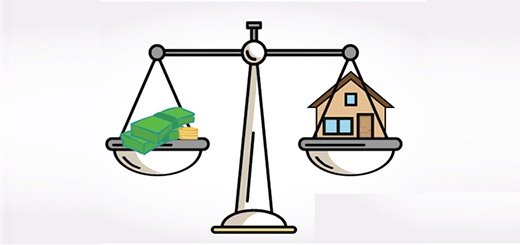Assets are widely known as anything that has value and return generating potential. It represents value of ownership. Investment asset can usually be of two types: Financial assets and Physical assets. Even though they seem similar, they are very different from each other based on their features and characteristics.
Financial Assets
It refers to assets that arise out of a contractual claim. Examples of such financial assets include stocks, bonds, funds held in a bank, investments, accounts receivable, company goodwill, copyrights, patents, etc.
Physical Assets
Physical assets, also called real assets have a very identifiable tangible presence. Examples of such physical assets include land, buildings, machinery, plant, tools, equipment, vehicles, gold, silver, art etc.
| Particulars | Financial Assets | Physical Asset |
| Nature | Intangible | Tangible |
| Changes in Value | Market price fluctuations | Depreciation and obsolete technology |
| Liquidity | High | Low |
| Additional Cost | Not required | Required for maintenance and repair |
| Purchase Value | Low | High |
Performance of the Asset Classes: Case Study
Mr. Jatin bought 200 shares of HDFC limited for Rs. 100 back in 1999. Around the same time, he also purchased a house in Navi Mumbai for Rs. 20 lakhs. The current price/market value of the investments is showed in the table below.
| Particulars | 1999 | 2019 |
| HDFC Ltd | 20 thousand | 57.50 lakhs** |
| House in Navi Mumbai | 20 lakhs | 2 crores |
** Cumulative of Dividends, Share Split and Bonus Shares issued.
From the above table, the value of the house is Navi Mumbai seems to be staggeringly higher than that of the value of HDFC shares. This is because the numbers are in absolute terms. To better under the investment returns, let’s look at the table below.
| Particulars | 1999 | 2019 | CAGR* | Growth* |
| HDFC Ltd | 20 thousand | 57.50 lakhs | 33% | 288x |
| House in Navi Mumbai | 20 lakhs | 2 crores | 12% | 10x |
*Approximately rounded off.

We can thus conclude that even though real estate investments in India have been widely popular, investors often only look at the absolute returns. The value of time is neglected. To create substantial wealth over the long-term, investors need to look beyond physical assets generating subpar returns. Only financial assets like equities can beat inflation and create substantial wealth over the long term.
The above example has some flaw, here the stock selected HDFC is one of the best performing stock in last few years. But what if you end up selecting stocks like R-power or R-com which has completing depleted your capital rather than giving returns? So to make your investment experience in to stock markets more pleasant and smooth you should opt options like mutual funds, where you have a fund manager, an expert in selecting good stocks, who earns his bread and butter by identifying good stocks and generating good returns out of them. Mutual funds are also a diversified portfolio so the impact on your capital due to underperformance of few stocks is not that severe.
Conclusion
Recently, a huge shift from physical to financial assets have been observed in the investment pattern, which is a result of high liquidity and time adjusted returns, as well as capital appreciation potential portrayed by equity and debt instruments. From a prudent financial planning objective, both financial as well as physical assets should form a part of an investor’s portfolio. However, the weightage given to each asset class should depend upon and align with the risk profile, investment horizon and investment objective of an individual.






